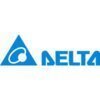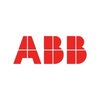Filter interviews by
POWERsonic Industries Interview Questions and Answers
POWERsonic Industries Interview Experiences
2 interviews found
I applied via Campus Placement and was interviewed in Nov 2023. There were 3 interview rounds.

(4 Questions)
- Q1. Electrical oriental questions
- Q2. What is ohm's law
- Ans.
Ohm's law states that the current flowing through a conductor is directly proportional to the voltage applied across it, and inversely proportional to the resistance of the conductor.
Ohm's law is expressed as: V = I * R, where V is the voltage, I is the current, and R is the resistance.
It helps in understanding the relationship between voltage, current, and resistance in an electrical circuit.
Ohm's law is fundamental i...
- Q3. What is power and current
- Ans.
Power is the rate at which work is done or energy is transferred, while current is the flow of electric charge in a circuit.
Power is measured in watts and is calculated by multiplying voltage and current.
Current is the flow of electric charge, measured in amperes (A).
Power is the ability to do work or produce an effect, while current is the movement of charge.
In an electrical circuit, power is the rate at which energy ...
- Q4. What is voltage
- Ans.
Voltage is the electric potential difference between two points in an electrical circuit.
Voltage is a measure of the force that pushes electric charges through a circuit.
It is measured in volts (V) and represents the energy per unit charge.
Voltage can be thought of as the pressure or intensity of the electric field.
Higher voltage means more potential energy available to move charges.
Voltage is necessary for the flow of
(6 Questions)
- Q1. Self introduction
- Q2. Electrical oriental
- Q3. Electronic oriental
- Q4. Subject oriental
- Q5. History oriental
- Q6. Knowledge oriental
Interview Preparation Tips
Production Engineer Interview Questions asked at other Companies
I applied via Approached by Company and was interviewed in Jun 2023. There were 3 interview rounds.

(1 Question)
- Q1. In previous company how long your work and experience and which position you are working and personal details
(1 Question)
- Q1. Transformer working principle
- Ans.
Transformers work on the principle of electromagnetic induction.
Transformers consist of two coils, known as the primary and secondary coils.
When an alternating current flows through the primary coil, it creates a changing magnetic field.
This changing magnetic field induces a voltage in the secondary coil.
The ratio of the number of turns in the primary and secondary coils determines the voltage transformation.
Transforme...
Quality Inspector Interview Questions asked at other Companies
Interview questions from similar companies

I applied via Naukri.com and was interviewed before Dec 2020. There were 3 interview rounds.
Interview Questionnaire
2 Questions
- Q1. Why we hire you and what you will do in initial 2 months !
- Q2. What's are the factors affecting the revenue flow in project related to execution?
- Ans.
Factors affecting revenue flow in project execution
Project delays
Scope creep
Inaccurate cost estimation
Poor resource allocation
Inefficient project management
Lack of communication
Market conditions
Competitive landscape
Economic factors
Interview Preparation Tips

Senior Engineer Interview Questions & Answers
Luminous Power Technologiesposted on 22 Jan 2021
Interview Questionnaire
3 Questions
- Q1. What is FMEA and CP,CPK
- Ans.
FMEA is a risk assessment tool used to identify and mitigate potential failures. CP and CPK are statistical measures of process capability.
FMEA stands for Failure Mode and Effects Analysis
It is used to identify potential failures in a process or product
CP and CPK are statistical measures of process capability
They are used to determine if a process is capable of producing products within specification limits
CPK is a mor...
- Q2. What is your ambitions
- Q3. How can grow a industry in QMS
- Ans.
Industry growth in QMS can be achieved by implementing efficient quality management systems and promoting their benefits.
Developing and implementing effective QMS policies and procedures
Providing training and education to employees on QMS
Encouraging continuous improvement and innovation in QMS
Promoting the benefits of QMS to customers and stakeholders
Ensuring compliance with industry standards and regulations
Collaborat...
Interview Preparation Tips

I applied via Walk-in and was interviewed before Apr 2020. There were 3 interview rounds.
Interview Questionnaire
1 Question
- Q1. What is market KRA, market analysis, plan and execution of market
- Ans.
Market KRA refers to Key Result Areas in the market, which includes market analysis, planning, and execution.
Market KRA is a set of measurable goals and objectives that a sales executive needs to achieve in the market.
Market analysis involves gathering and analyzing data about the market, competitors, customers, and trends to make informed business decisions.
Market planning is the process of developing strategies and t...
Interview Preparation Tips

I appeared for an interview in Dec 2016.
Interview Questionnaire
1 Question
- Q1. How you will work under a supervisor.
- Ans.
I will communicate effectively, follow instructions, seek feedback, and collaborate with my supervisor.
Communicate regularly with supervisor to provide updates on progress and ask for clarification when needed
Follow instructions carefully and ask for help if unsure about a task
Seek feedback on my work to improve and grow professionally
Collaborate with supervisor and team members to achieve project goals
Provide suggesti
Interview Preparation Tips
Experience: I got selected for next round.
Tips: Do not loses hope.
Duration: 1 hour
Total Questions: 10
Round: Technical + HR Interview
Experience: It was nice experience.
Tips: Do not loses hope.
Skills: Technical Analysis, Managing People
College Name: IIT Kharagpur

I applied via LinkedIn and was interviewed before Sep 2021. There were 2 interview rounds.

Conversation about my experience
Interview Preparation Tips

(5 Questions)
- Q1. I am Devender singh
- Q2. Current warking okaya Company
- Q3. I am Devendra Singh
- Q4. Currently working okaya company two wheeler sales executive
- Q5. Sales executive 3 years experience
I am Devender singh and Current working okaya Company
I am Devender singh and Current working okaya Company

Assistant Manager Interview Questions & Answers
Microtek Internationalposted on 23 Oct 2023
I applied via Recruitment Consulltant and was interviewed in Sep 2023. There were 3 interview rounds.

(2 Questions)
- Q1. Introduction about me currently working company and responsibilities now
- Q2. Give us a complete introduction about you and your company responsibilities
(3 Questions)
- Q1. Give complete clause for new product development what are my responsibilities in these clauses how I give ppap in front of customer
- Q2. What are my responsibilities in industrial engineering department how can we handling both departments new development and process engineering
- Q3. What are responsibilities in TPM,IATF16949, customer visit for new product development, audit
- Ans.
Responsibilities in TPM, IATF16949, customer visits for new product development, and audits involve ensuring compliance with quality standards, managing customer relationships, and conducting internal and external audits.
Ensuring compliance with Total Productive Maintenance (TPM) practices to optimize equipment effectiveness and minimize downtime
Implementing and maintaining the requirements of the IATF 16949 standard f...

Assistant Manager Interview Questions & Answers
Microtek Internationalposted on 28 Jul 2022
It's A behavioral or Aptitude test
(1 Question)
- Q1. One to one Interaction with Plant HR
(1 Question)
- Q1. Meet With Plant Head
Interview Preparation Tips
POWERsonic Industries Interview FAQs
Tell us how to improve this page.
Interview Questions for Popular Designations
POWERsonic Industries Interview Process
based on 6 interviews
Interview experience
Interview Questions from Similar Companies
Fast track your campus placements
POWERsonic Industries Reviews and Ratings
based on 6 reviews
Rating in categories
|
Customer Service Executive
6
salaries
| ₹3.2 L/yr - ₹5.7 L/yr |
|
Production Engineer
5
salaries
| ₹1.1 L/yr - ₹2.2 L/yr |
|
Project Engineer
4
salaries
| ₹1.5 L/yr - ₹3 L/yr |
|
Product Lead
4
salaries
| ₹3 L/yr - ₹3.6 L/yr |
|
Warehouse Assistant
4
salaries
| ₹1.5 L/yr - ₹2.2 L/yr |

Exide Industries

Amara Raja Energy & Mobility

Luminous Power Technologies

Su-Kam Power Systems
- Home >
- Interviews >
- POWERsonic Industries Interview Questions












